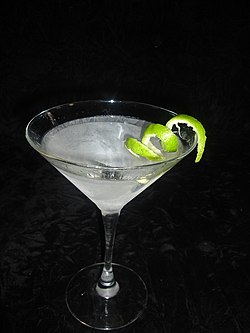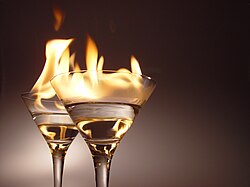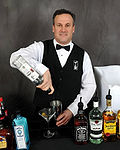

Cocktail garnishes are decorative ornaments that add character or style to a mixed drink, most notably to cocktails. [1]
Contents
They are used to complement and enhance the flavors in a drink by stimulating the special nerve cells in the nose and mouth [2]
A large variety of cocktail garnishes are used. Many rum-based cocktails, especially those with fruit flavors, tend to be decorated with tropical-themed garnishes or slices of fruit. Tequila-based drinks favor limes and other citrus fruits. Gin- and vodka-based drinks tend toward garnishes with a more dignified flair (olives, onions, or possibly a citrus twist or a single maraschino cherry), unless they are variations of a fruity rum-based drink. Whiskey- and brandy-based drinks tend toward minimal garnishment, if any. Restaurant chains and hotel bars tend to use larger and more ostentatious garnishes, and neighborhood bars tend to go the other extreme.[ citation needed ]
Some garnishes are essential to completing the recipe, as in the case of the olive in the Martini, the maraschino cherries in the Queen Mary and the Manhattan, or the onion in the Gibson. Another reason for garnishes is to make cocktails more "camera ready" so that when photos are taken for the press or social media, different drinks will not look so much alike. [3]















